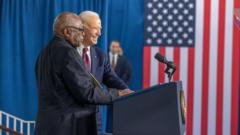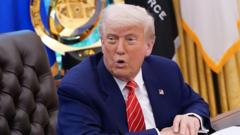This article delves into Donald Trump’s latest administration moves post-election, highlighting his proposed tax cuts and key appointments while examining the challenges ahead.
Trump's Tax Cuts and Transition: A Comprehensive Overview

Trump's Tax Cuts and Transition: A Comprehensive Overview
As Trump begins his second term, uncertainty looms over potential tax reforms amidst a changing political landscape.
After a dramatic election week, President-elect Donald Trump has set his sight on premier positions within his administration, eager to implement his agenda. His campaign promised a variety of loosely defined tax cuts, launching lawmakers into deliberations on how feasible such drastic tax reductions could be this time around.
During Trump’s first term, he introduced a significant tax reform package, yet many of its provisions are set to expire by the end of 2025. This looming deadline raises questions about how Congress will navigate the financial landscape and the implications of potential tax cuts. The cost of merely maintaining current tax rates is considerable, adding urgency to negotiations.
Among his strategic appointments, Trump has named Susie Wiles as his chief of staff—the first woman in this key position—knowing her deep ties to his operation since the start of his political career. Meanwhile, Robert F. Kennedy Jr. is expected to play a pivotal role, outlining potential health policies under the new administration.
Amidst the Republican strategy, President Biden has urged the nation to accept the election results and promised a smooth transition of power. Yet, the Democratic Party now faces challenges in justifying Vice President Kamala Harris’s loss, with influencers pointing to misinformation, geopolitical issues such as the Gaza conflict, and other divisive party matters.
As Trump assembles his team, the upcoming months will prove critical in defining his second term amid financial and political challenges.





















